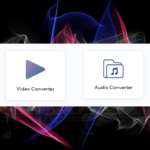Search engine optimization is all about the online visibility of a website or a webpage in the organic or unpaid search results of a search engine. In the world that runs on the internet and where information is available right at the fingertips of users, presence in the online world has gained much more significance than ever before. Be it a giant conglomerate or a new start-up, be it an experienced writer or a casual blogger, be it a moviemaker or a teenager creating videos covering various places he travels, the internet has the space for one and all, to showcase the content one can wish for. SEO Los Angeles companies have a reputation of guiding their clients in creating quality content, which is an evergreen search engine optimization technique.
Search engine optimization technique can be applied in web publishing to create articles and content that can draw traffic for a higher ranking in search engines. Hence, any content created for the sole purpose of attracting online traffic is SEO content. Its content can include articles, blogs, product pages, guides, videos, infographics, glossaries, directories, and so on. A product page on an e-commerce website is any page that contains details about a product such as a price, size, colors available, shipment, delivery time, etc. This page is essential for e-commerce websites as it is this content that sells a product. An article is a news piece on an e-newspaper, an interview, or a feature or just a bit of content in a magazine.
A blog post is the easiest means of drawing traffic as one can create content through blogs keeping in mind the target audience. As blog posts can be more engaging unlike an article in a magazine or a product description, it can prove to be one of the successful ways of drawing traffic to your website and therefore, building some authority. Also, importantly, a blog can also contain any SEO content such as videos and infographics. A guide, on the other hand, is a long content often spread across multiple web pages. It presents a topic in a detailed way and is hence, more information–exhaustive. Videos, infographics, glossaries, directories, etc. are some of the effective forms of SEO content.
Let’s now have a look at some of the tips of writing an SEO article.
Choosing your keywords right:
Keywords are those words or phrases that a user types in the search box to obtain results related to the keywords. So basically, keywords are a guide for the search engines to understand what a searcher is looking for. It is essential to realize that whatever efforts you put, Google or for that matter any search engine takes time to notice. Do thorough keyword research and seek the help of online tools to get the set of keywords for your product or information, and get started with an article that must contain those keywords. Please note that it shouldn’t appear from the article that keywords have been stuffed only for the sake of it, rather the article should have a smooth flow and the keywords should seem to be naturally occurring.
There are various points in an article where you can use the keywords, most important being the title and the content body. That is the place that attracts both the users as well as the search engines. Apart from this the URL field, Meta description, and the image alt attribute are some other helpful areas that an SEO writer must keep in mind while creating content.
Writing your article right:
An article must be informative, engaging, and grammatically correct. A well–written article is the key to drawing and building audience. Make sure your article has a catchy title, and one must strictly avoid spelling mistakes. Try to break the article into short paragraphs and try to present content pointwise. Breaking the flow in regular intervals can keep the audience engaged, given the short attention span of the digital readers. Try to use the keywords in your article as early and as naturally as you can. Titles and subheaders are some of the points that must contain your keywords. Using keywords for more than the required density will lead to keyword stuffing that can be easily caught by search engines. Highlight titles and keywords, say, by making them italic or bold.
Build links and add hyperlinks to your article:
You can associate your article with other quality and informative articles. You can highlight a word or a phrase that can direct readers to another web link that would contain other related content. Make sure that the hyperlink you add, leads to a webpage that has quality content and useful information on the concerned topic. Also, build links. Share the links to your content on various social media platforms such as Facebook, Twitter, Tumblr, etc. encourage your target audience to share and spread your content. You can also make your keywords clickable links, especially at the beginning and conclusion of an article.
Create content for the people, not for the engines:
Yes, always know that you are writing for the humans that require your content, and not for the search engine algorithms. One must keep in mind, what kind of content would a user be interested in and whether the content will make good sense for the reader. Write something that adds value to your reader after they are done reading your article. Do you have anything to tell them that no one else has or do you have any unique information that is worth sharing? If you know about any topic that most people are unaware of, share it. Good, sensible content is the key to drawing attention.
Have a basic knowledge of the technical SEO:
You are not required to know the deep technicalities of keyword optimization, but as an SEO writer, you must have a basic idea of say, how Google crawls the pages or advantages of a backlink.
Keep these tips in mind while you create content that has the potential to draw the entire world!








